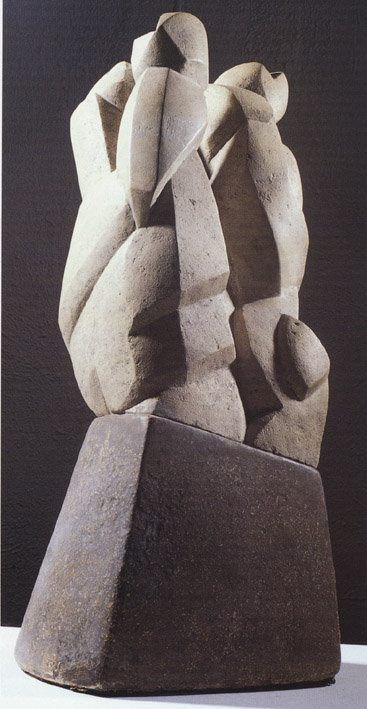Henri Gaudier-Brzeska
dal 30/3/2007 al 15/6/2007
Segnalato da
30/3/2007
Henri Gaudier-Brzeska
Graves Art Gallery, Sheffield
Il percorso espositivo, articolato in 76 sculture, disegni e stampe, si propone di cogliere la modernita' dell'opera dell'artista suggerendone le affinita' con la produzione di alcuni maestri riconosciuti della scultura moderna.

WE the moderns
--------english below
La carriera dello scultore francese Henri Gaudier-Brzeska (1891-1915) fu tragicamente breve. Come molti giovani della sua generazione, l'artista morì in combattimento durante la Prima Guerra Mondiale, a soli 23 anni. Tuttavia, nel breve spazio del triennio 1912-14, Gaudier-Brzeska contribuì significativamente allo sviluppo di un linguaggio scultoreo radicalmente nuovo.
Dopo la sua permanenza a Parigi, Gaudier si trasferì a Londra nel gennaio 1911, insieme alla compagna e aspirante scrittrice Zofia Brzeska, il cui cognome, per opportunità sociale, aggiunse al proprio. Ispirato, almeno inizialmente, dalla scultura di Auguste Rodin e dalla pittura post-impressionista, presto Gaudier cominciò ad interessarsi alle ricerche formali più avanzate delle avanguardie storiche, Cubismo, Futurismo ed Espressionismo in particolare, così come all’arte di culture extra-europee e alle teorie del ‘filosofo degli artisti’ Henri Bergson. In maniera rigorosa il giovane artista assimilò queste idee nella sua opera e, nonostante un medium essenzialmente statico quale la scultura, esplorò in particolare la rappresentazione del movimento in un originale e spesso innovativo metodo di figurazione, giocato sui rapporti tra superfici piane e geometriche con la tecnica del taglio diretto su pietra. Forte di tali sperimentazioni, Gaudier si allineò dunque agli scultori che considerava “i moderni” – Constantin Brancusi, Amedeo Modigliani, Jacob Epstein e Aleksander Archipenko – così come alle ricerche di Raymond Duchamp-Villon, Henri Laurens, Jacques Lipchitz, Henri Matisse e Pablo Picasso.
Il percorso espositivo, articolato in 76 sculture, disegni e stampe, si propone di cogliere la modernità dell’opera di Gaudier suggerendone le affinità con la produzione di alcuni maestri riconosciuti della scultura moderna. Dunque, in relazione al contesto artistico europeo del loro tempo, le opere di Gaudier sono presentate accanto a capolavori quali l’Uomo che cammina di Rodin (1900), Aurore di Matisse (1907), Testa di donna - Fernande di Picasso (1909), una testa in pietra di Modigliani (1911-12), Gran cavallo (1914) di Duchamp-Villon, Donna che si pettina di Archipenko (1915), Danaide di Brancusi (1918) e i basso-rilievi di Laurens e Lipchitz.
Curata da Sebastiano Barassi e Michael Harrison (Kettle's Yard, University of Cambrige), la mostra è accompagnata da un catalogo con saggi di Sebastiano Barassi, Mark Antliff (Duke University), Jonathan Black (Kingston University) e Jon Wood (Henry Moore Institute).
--------english
Henri Gaudier-Brzeska’s career as a sculptor was brief – from 1911, when he came to London from France, until he was killed in action in 1915, aged just 23. Yet, despite his young age and a life marked by poverty, in three and a half years Gaudier created a substantial and truly advanced body of work. This exhibition, for the first time, sets his achievement against the European context in which his art matured, and traces his contribution to the sculpture of the modern age.
Initially inspired by the sculpture of Auguste Rodin and Post-Impressionist painting, Gaudier soon became aware of the latest artistic developments on the continent, above all Cubism, Futurism and Expressionism. This was a time when artists were awakening to the arts of non-European cultures, when Einstein was developing his theory of relativity, Freud was exposing the importance of the unconscious and Henri Bergson was lecturing to packed theatres across the continent on our experience of space and time.
Gaudier’s work was nurtured by these ideas, exploring for example the representation of movement in the essentially static medium of sculpture, new ways of constructing sculptural forms through geometrical planes, and the method of carving directly in stone. These were concerns shared by the artists he cited as fellow ‘moderns’ – Constantin Brancusi, Amedeo Modigliani, Jacob Epstein and Alexander Archipenko – and also by others, such as Joseph Csàky, Raymond Duchamp-Villon, Henri Laurens, Jacques Lipchitz, Henri Matisse, Pablo Picasso and Ossip Zadkine, as well as the German Expressionists and the Italian Futurists. At the same time his graphic work was strongly influenced by Toulouse-Lautrec.
By displaying a substantial selection of Gaudier’s sculptures and drawings alongside work by all these artists, the exhibition offers fresh insight into the sculptor’s art, highlighting not only the influences that shaped it but also striking affinities with contemporary and later work, which reveal Gaudier’s modernity.
The exhibition is curated by Sebastiano Barassi and Michael Harrison (Kettle's Yard, University of Cambridge) and is accompanied by a well-illustrated catalogue, with essays by Mark Antliff (Duke University), Jonathan Blackwood (Kingston University), Jon Wood (Henry Moore Institute) and Sebastiano Barassi.
Graves Art Gallery
Surrey Street S1 Sheffield



